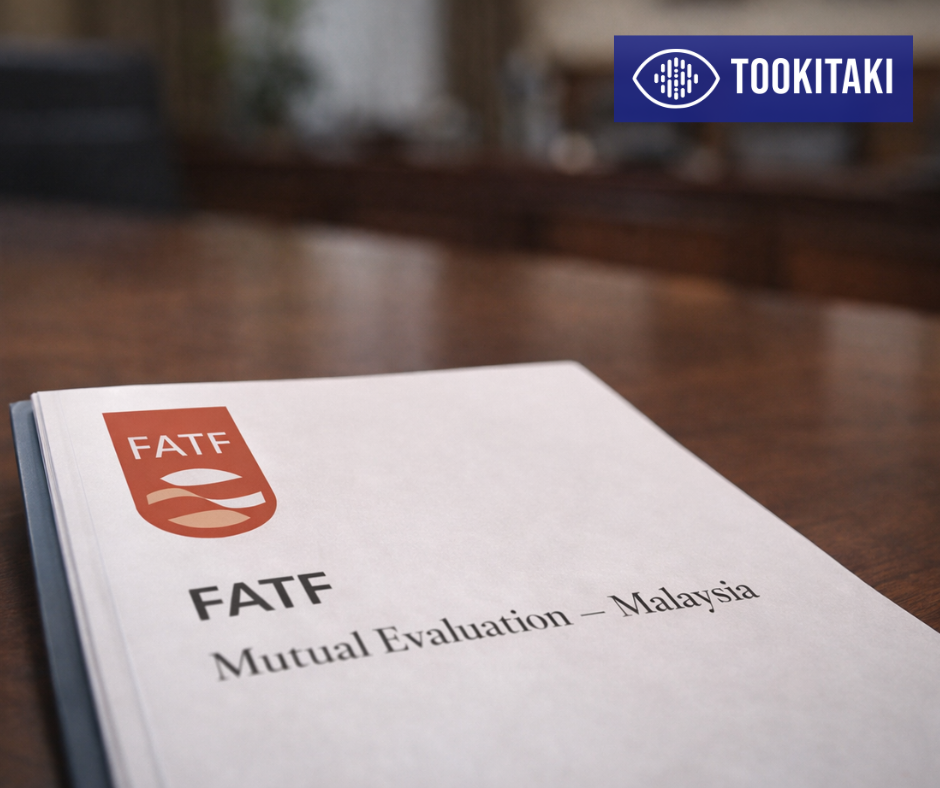Future-Proofing AML: Insights from Singapore's Risk Assessment
.svg)
Anti-money laundering (AML) strategies are crucial for the financial sector. They help prevent and detect illegal activities, protecting the integrity of financial systems. The 2024 Singapore National Money Laundering Risk Assessment Report highlights the evolving threats and the need for advanced solutions.
The report states, "Singapore is exposed to the risks of transnational Money Laundering (ML), Terrorism Financing (TF), and Proliferation Financing (PF)." These risks require robust and adaptive AML strategies. Advanced AI can play a key role in future-proofing these strategies, providing real-time monitoring and improved accuracy.
The Evolving Nature of Money Laundering Threats
Singapore's risk assessment identifies several key ML threats. These include cyber-enabled fraud, organised crime, corruption, tax crimes, and trade-based money laundering (TBML). Each of these threats is evolving with technology and global changes.
- Cyber-Enabled Fraud: Cyber-enabled fraud is a significant threat. It involves using the internet to commit fraud and launder money. The report notes, "Singapore has also observed an increase in ML threat posed by cyber-enabled fraud committed domestically, orchestrated by syndicates typically located overseas."
- Organised Crime: Organised crime, such as illegal online gambling, poses high risks. Criminals use complex methods to launder large sums of money. The report highlights a recent case involving over S$3 billion worth of seized and prohibited assets linked to foreign organized crime groups.
- Corruption: Corruption remains a major threat. Criminals use sophisticated methods to hide and move illegal funds. The report states, "The threat of corruption proceeds being laundered through our region is assessed to be high, given Singapore’s geographical location and status as an international business, financial and trading centre."
- Tax Crimes: Tax crimes are also on the rise. Singapore's status as a wealth management hub attracts criminals looking to launder tax crime proceeds. The report observes, "Singapore has seen an increase in the number of incoming foreign requests relating to tax offences."
- Trade-Based Money Laundering (TBML): TBML is another growing threat. Criminals use trade transactions to hide and move illegal money. The report mentions, "Singapore faces an inherent threat of foreign TBML given its status as a trading and transportation hub."
These threats are evolving with technological advancements and geopolitical changes. Criminals are using more sophisticated techniques and digital platforms to launder money. This makes it essential to have adaptive and robust AML strategies.
{{cta-guide}}
Sectoral Risk Assessments
Financial Sector
The financial sector, particularly banks and wealth management services, poses the highest ML risks. This is due to their extensive networks and high transaction volumes. The report states, "The banking sector has been assessed to pose the highest ML risk to Singapore. The role of banks in facilitating transactions in the financial system, and their wide networks through which cross-border transactions can be conducted, make banks a common channel which criminals exploit."
Additionally, payment institutions and digital payment token service providers face significant risks due to the nature of their operations, which involve handling large volumes of transactions and providing services that can be misused for money laundering.
Designated Non-Financial Businesses and Professions (DNFBP)
The DNFBP sector also faces substantial ML risks. Corporate Service Providers (CSPs) are particularly at high risk because of their role in company incorporation, which can be exploited by criminals to set up shell companies for money laundering purposes. The report highlights that "CSPs pose higher ML risks given the role they play in providing upstream services such as incorporation of companies."
Other high-risk sectors in the DNFBP category include real estate, casinos, and precious stones and metals dealers. These sectors are vulnerable due to their involvement in high-value transactions, which can be attractive for money launderers seeking to integrate illicit funds into the legitimate economy.
Guidance to Financial Institutions to Prevent Money Laundering
The 2024 Singapore National Money Laundering Risk Assessment Report provides detailed guidance to financial institutions (FIs) on enhancing AML efforts by adopting a risk-based approach tailored to specific risks. This includes conducting thorough risk assessments, implementing robust controls, and integrating NRA findings into internal risk assessments for better risk mitigation.
The report emphasises the need for continuous improvement in AML strategies. Financial institutions should utilise AI to enhance monitoring, detect suspicious activities, and reduce false positives. Inter-agency cooperation is also crucial for staying updated on emerging threats and best practices in AML. By following these guidelines, FIs can build more effective AML frameworks.
Challenges in Traditional AML Strategies
Traditional AML methods face several limitations. These methods depend heavily on manual processes, which are slow and less effective. This over-reliance makes it hard to keep up with fast-evolving money laundering techniques.
Over-reliance on Manual Processes
Manual processes involve significant human intervention. This can lead to delays and errors. It also makes it difficult to process large volumes of transactions quickly.
High Rates of False Positives
One major problem with traditional AML methods is the high rate of false positives. Many alerts are triggered by legitimate transactions, which wastes time and resources. This makes it harder to identify real threats.
Slow Response to Emerging Threats
Traditional AML methods are often slow to respond to new threats. Criminals are always finding new ways to launder money. Manual systems can't adapt quickly enough to these changes.
The Need for More Dynamic and Responsive AML Strategies
Given these limitations, there is a clear need for more dynamic and responsive AML strategies. These strategies should be able to analyse large amounts of data quickly and accurately. This is where advanced AI can make a significant difference.
The Role of Advanced AI in AML
Advanced AI offers powerful tools for AML. It can handle real-time monitoring and analysis of transactions. AI can quickly process large volumes of data, making it ideal for modern AML needs.
- Real-Time Monitoring and Analysis: AI enables real-time monitoring and analysis of transactions. It can process millions of transactions per second. This helps financial institutions detect suspicious activities as they happen.
- Improved Accuracy in Detecting Suspicious Activities: AI improves the accuracy of detecting suspicious transactions. It learns from past data to identify patterns of illegal activities. This helps reduce the number of false positives and focuses on real threats.
- Reduction in False Positives: One of the biggest benefits of AI in AML is the reduction in false positives. AI systems can differentiate between legitimate and suspicious transactions more effectively. This saves time and resources, allowing compliance teams to focus on genuine threats.
Tookitaki’s AI-Driven AML Solutions
Tookitaki's FinCense is the most intelligent financial crime prevention platform available. This distinction is driven by our innovative use of collective intelligence and a federated approach. Our Anti-Financial Crime (AFC) Ecosystem leverages an expert network that continuously updates and shares knowledge, acting as a force multiplier. This collaborative model significantly outperforms the siloed approaches used by our competitors, ensuring our clients benefit from the most comprehensive and up-to-date financial crime prevention strategies.
Tookitaki utilises a multi-layered AI approach in the FinCense suite and AFC ecosystem for robust and adaptive financial crime prevention. Leveraging insights from the AFC ecosystem, AI models in FinCense analyse transactions in real time for fraud prevention and AML transaction monitoring. AI also enhances name screening and customer risk scoring, while reducing false alerts.
The AFC ecosystem shares typologies of financial crimes through AI-enhanced analysis, while adaptive learning continuously updates crime prevention strategies. Tookitaki's Data Science Studio supports multiple ML models and includes an explainability framework for transparent AI-driven decisions, ensuring comprehensive financial crime prevention and operational efficiency.
{{cta-ebook}}
How to Fight Emerging ML Threats
Tookitaki’s AI-driven solutions are designed to adapt to the ever-changing landscape of money laundering threats. One of the key features is the continuous learning and updating of AML models. The AI models within Tookitaki's system learn from new data and experiences, allowing them to stay ahead of emerging threats. This adaptive learning process ensures that the AML strategies remain effective even as criminals develop new techniques.
Another significant advantage is the proactive identification of new crime patterns. Tookitaki’s AI leverages insights from the Anti-Financial Crime (AFC) ecosystem, which is a collaborative network of experts sharing knowledge on financial crime typologies. This collective intelligence enables the AI to identify and respond to new patterns of suspicious activity swiftly. By staying informed about the latest methodologies used by criminals, Tookitaki ensures that financial institutions are always equipped with the most current and effective tools to combat money laundering.
Scalability is also a crucial aspect of Tookitaki’s AI-driven solutions. The platform is built to handle increasing transaction volumes and the complexities of modern financial operations. As financial institutions grow and process more transactions, Tookitaki’s AI can scale seamlessly to meet these demands. This scalability is essential for maintaining robust AML defences in an environment where transaction volumes can grow rapidly and unpredictably.
Final Thoughts
Future-proofing AML strategies with advanced AI is crucial. AI-driven solutions offer real-time monitoring, improved accuracy, and scalability to handle increasing transaction volumes. Tookitaki's innovative approach, leveraging collective intelligence and a federated learning model, ensures financial institutions are equipped with the most current and effective tools to combat financial crime.
Financial institutions must explore Tookitaki’s AI-driven solutions to enhance their AML compliance. By adopting these advanced technologies, institutions can stay ahead of criminals, reduce operational inefficiencies, and ensure a safer financial environment. Embrace the future of AML with Tookitaki and build a robust defence against financial crime.
Experience the most intelligent AML and fraud prevention platform
Experience the most intelligent AML and fraud prevention platform
Experience the most intelligent AML and fraud prevention platform
Top AML Scenarios in ASEAN

The Role of AML Software in Compliance









